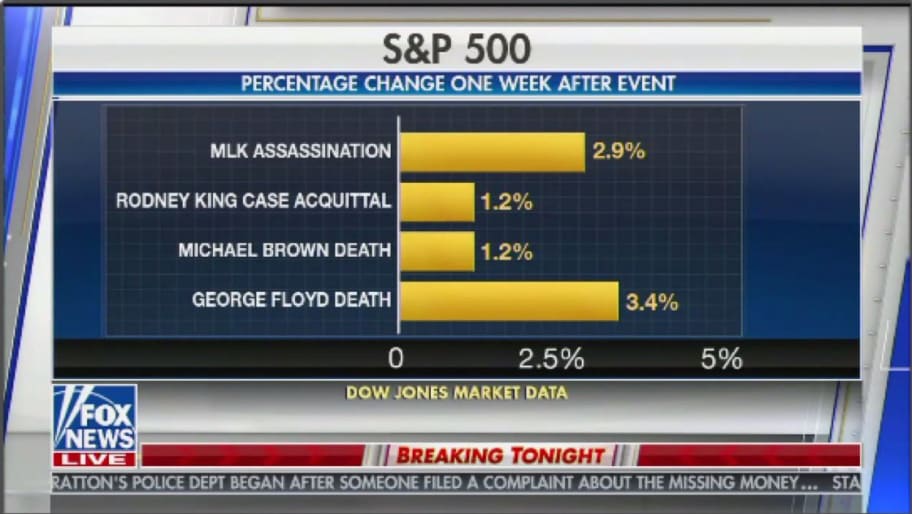Benjamin Abbott Mar 1, 2013 Ethical Technology
https://ieet.org/index.php/IEET2/more/abbott20130301
For a brief moment in the 1933, a radical solution to the Great Depression seized public attention across the United States. Claiming the mantle of scientific authority and well-equipped with facts and figures, Technocracy condemned the economic status quo – the price system – as hopelessly antiquated in an age of abundant energy. Technocrats argued the era of meaningful scarcity had ended.
The movement proposed a technician-run economy of equally distributed prosperity as the only way to prevent ecological and social collapse in the North American continent. In the context of financial meltdown and widespread destitution coupled with overproduction, the country's population proved receptive to the possibility of switching to economic system firmly grounded in material reality and organized by engineers' logic of instrumental rationality.
That transition never happened, of course; the price system weathered that crisis and others that followed. Technocracy fell back into obscurity as suddenly as it rose to prominence. Many historians treat the movement as a curiosity worthy only of ridicule – and not without reason. I've scant interest in promoting Technocracy as such and less still in apologizing for movement figurehead and would-be supreme leader Howard Scott.
However, I consider Technocracy's critique of capitalism and future vision valuable in that comes from an engineering perspective. Through insistent focus on the physical and technical, Technocracy turns on its head economists' claims about the efficiency of capitalism and effectively characterizes the price system overwhelmingly wasteful. Despite their myopia and enthusiastic embrace of numerous forms of oppression, Scott and company's analysis provides insight into the profound contradictions of the industrial world system and the project of cultivating better future.
Here in the twenty-first century, eighty years past the zenith of the Technocracy movement's notoriety, the contrast between actually existing production and human wants stands out as even more absurd. There's so much manufactured stuff around that many affluent folks don't know what to do with it. Few things last; designs routinely assume or ensure rapid obsolescence.
Dumpsters swell and spill over; landfills sprawl across acres and acres. In the Pacific Ocean, trash coalesces into patch of arguably continental proportions. Waste, as miserably processed as vast majority of it is, constitutes as resource for scavengers. Bottle, can, and scrap metal collection forms an important income for impoverished urban residents. I personally survive primarily from food deemed unsellable and thus donated. I know comrades who live off the food people leave on their plates at restaurants when traveling. Between gift markets and friends, I can hardly remember the last time I paid for clothing.
The scavenger economy marginals like me participate in – constrained as it is by gates, locks, and zealous garbage defenders – only hints at the staggering excesses of capitalism. Let's begin with a big-picture view of basic necessities and comforts. First, nutrition. A recent report by the Institution of Mechanical Engineers concludes that a third to half of all food produced simply spoils. Next, shelter. In in the United States, approximately twenty-four houses go completely empty for each houseless person. So much more residential space goes unused at the micro level; the other bedroom in the apartment where I stay has been unoccupied for the better part of a month while I search for someone to fill it.
What about transportation? As Bianca Mugyenyi and Yves Engler convincingly show, U.S. car culture approaches optimization's antithesis. You’ve got to work at it to devise a system that squandered more resources than multiton hunks of metal that commonly carry only a single person and spend 95% of time idly taking up space.
Members of the Technocracy movement examined similar dynamics from their time and concluded that it could and had to be done better. Along with Thorstein Veblen's 1921 The Engineers and the Price System, the Technical Alliance's studies of industrial waste appear in any account of the Technocracy movement's origins. The Technical Alliance – a group that included both Scott and Veblen during its 1920-1921 existence – prepared reports from clients such as the Railroad Brotherhood and the Industrial Workers of the World (IWW). Stuart Chase used his research with Technical Alliance as the foundation for his 1925 book The Tragedy of Waste. From a system-design standpoint, capitalist production and distribution looks like an awful, ugly mess.
I find this approach of comparison with the physically possible ideal an illuminating and provocative heuristic device. I heartily recommend contemplating what you want whether it’s possible or not as technique of both social critique and personal understanding, but the materialist-empiricist epistemology employed by the Technocracy movement adds a grounding element to this utopian exercise. If wielded prudently, Technocracy’s extreme reduction of human beings to machines with energy inputs and outputs constitutes a fruitful thought experiment. As sketched above, the ideal here obliterates assertions of capitalism’s efficiency. At best proponents can retreat to the stance that capitalism least bad among a lineup of stinkers.
While Scott insisted on distinguishing Technocracy and the technical mindset he idolized from Leftist revolutionary ideology, Veblen took a less rigid view and happily channeled Marxism in his notorious call for “a soviet of engineers and technicians.” Technocracy promised an old socialist, communist, and anarchist objective: universal comfort with minimal toil. Following Henry Elsner, Jr., I interpret the Technocracy – especially Technocracy, Inc. under Scott’s domination – as an authoritarian Left movement not as far removed from the Marxist spectrum as Scott repeatedly proclaimed. Dreams of egalitarian automation animated Leftists of Elsner’s era; I’m especially fond of socialist-feminist Shulamith Firestone’s cybernetic communism and Valerie Solanas’s plan for complete automation. Today, apart from Technocracy Inc. itself and explicit descendants such as Network of European Technocrats, Technocracy’s influence seems strongest in the Zeitgeist Movement and associated Venus Project.
In relation to the post-scarcity discourse prevalent within transhumanist and Singularitarian circles, remembering the Technocracy movement indicates that we need not wait for nanofactories and artificial general intelligence to terminate human want. The technical ability to create abundance of the basics has been around since the dawn of the twentieth century if not much earlier. Building a post-scarcity society requires political struggle and isn’t likely to happen on its own. There’s no guarantee that increasingly potent productive technology will lead to distributed plenty. As the current intellectual property rights regime demonstrates, governments can manufacture scarcity through coercion.
I conclude with a passage from the soul-searching debate within the Continental Committee on Technocracy that resulted from the split with Scott. The sentiment expressed applies as well to transhumanism and the Singularity movement in my estimation:
Some of us contended that behind the fad, the fantastic figures, and the pseudo-scientific jargon, was a sound idea. And that civilization itself might very well depend on getting this fundamental idea accepted, on proving to the people that the days of material scarcity would be over as soon as they willed it (Continental Committee on Technocracy, Bulletin No. 13, August 1, 1934).
Further Reading:
Akin, William E. Technocracy and the American Dream: The Technocrat Movement, 1900-1941. Berkeley: University of California Press, 1977.
Elsner, Jr., Henry. The Technocrats: Prophets of Automation. Syracuse: University of Syracuse Press, 1967.
Segal, Howard P. Technological Utopianism in American Culture. Syracuse: University of Syracuse Press, 2005.
Stabile, Don R. “Veblen and the Political Economy of Technocracy: The Herald of Technological Revolution Developed an Ideology of 'Scientific' Collectivism.” American Journal of Economics and Sociology 46:1 (1987), 35-48.
The movement proposed a technician-run economy of equally distributed prosperity as the only way to prevent ecological and social collapse in the North American continent. In the context of financial meltdown and widespread destitution coupled with overproduction, the country's population proved receptive to the possibility of switching to economic system firmly grounded in material reality and organized by engineers' logic of instrumental rationality.
That transition never happened, of course; the price system weathered that crisis and others that followed. Technocracy fell back into obscurity as suddenly as it rose to prominence. Many historians treat the movement as a curiosity worthy only of ridicule – and not without reason. I've scant interest in promoting Technocracy as such and less still in apologizing for movement figurehead and would-be supreme leader Howard Scott.
However, I consider Technocracy's critique of capitalism and future vision valuable in that comes from an engineering perspective. Through insistent focus on the physical and technical, Technocracy turns on its head economists' claims about the efficiency of capitalism and effectively characterizes the price system overwhelmingly wasteful. Despite their myopia and enthusiastic embrace of numerous forms of oppression, Scott and company's analysis provides insight into the profound contradictions of the industrial world system and the project of cultivating better future.
Here in the twenty-first century, eighty years past the zenith of the Technocracy movement's notoriety, the contrast between actually existing production and human wants stands out as even more absurd. There's so much manufactured stuff around that many affluent folks don't know what to do with it. Few things last; designs routinely assume or ensure rapid obsolescence.
Dumpsters swell and spill over; landfills sprawl across acres and acres. In the Pacific Ocean, trash coalesces into patch of arguably continental proportions. Waste, as miserably processed as vast majority of it is, constitutes as resource for scavengers. Bottle, can, and scrap metal collection forms an important income for impoverished urban residents. I personally survive primarily from food deemed unsellable and thus donated. I know comrades who live off the food people leave on their plates at restaurants when traveling. Between gift markets and friends, I can hardly remember the last time I paid for clothing.
The scavenger economy marginals like me participate in – constrained as it is by gates, locks, and zealous garbage defenders – only hints at the staggering excesses of capitalism. Let's begin with a big-picture view of basic necessities and comforts. First, nutrition. A recent report by the Institution of Mechanical Engineers concludes that a third to half of all food produced simply spoils. Next, shelter. In in the United States, approximately twenty-four houses go completely empty for each houseless person. So much more residential space goes unused at the micro level; the other bedroom in the apartment where I stay has been unoccupied for the better part of a month while I search for someone to fill it.
What about transportation? As Bianca Mugyenyi and Yves Engler convincingly show, U.S. car culture approaches optimization's antithesis. You’ve got to work at it to devise a system that squandered more resources than multiton hunks of metal that commonly carry only a single person and spend 95% of time idly taking up space.
Members of the Technocracy movement examined similar dynamics from their time and concluded that it could and had to be done better. Along with Thorstein Veblen's 1921 The Engineers and the Price System, the Technical Alliance's studies of industrial waste appear in any account of the Technocracy movement's origins. The Technical Alliance – a group that included both Scott and Veblen during its 1920-1921 existence – prepared reports from clients such as the Railroad Brotherhood and the Industrial Workers of the World (IWW). Stuart Chase used his research with Technical Alliance as the foundation for his 1925 book The Tragedy of Waste. From a system-design standpoint, capitalist production and distribution looks like an awful, ugly mess.
I find this approach of comparison with the physically possible ideal an illuminating and provocative heuristic device. I heartily recommend contemplating what you want whether it’s possible or not as technique of both social critique and personal understanding, but the materialist-empiricist epistemology employed by the Technocracy movement adds a grounding element to this utopian exercise. If wielded prudently, Technocracy’s extreme reduction of human beings to machines with energy inputs and outputs constitutes a fruitful thought experiment. As sketched above, the ideal here obliterates assertions of capitalism’s efficiency. At best proponents can retreat to the stance that capitalism least bad among a lineup of stinkers.
While Scott insisted on distinguishing Technocracy and the technical mindset he idolized from Leftist revolutionary ideology, Veblen took a less rigid view and happily channeled Marxism in his notorious call for “a soviet of engineers and technicians.” Technocracy promised an old socialist, communist, and anarchist objective: universal comfort with minimal toil. Following Henry Elsner, Jr., I interpret the Technocracy – especially Technocracy, Inc. under Scott’s domination – as an authoritarian Left movement not as far removed from the Marxist spectrum as Scott repeatedly proclaimed. Dreams of egalitarian automation animated Leftists of Elsner’s era; I’m especially fond of socialist-feminist Shulamith Firestone’s cybernetic communism and Valerie Solanas’s plan for complete automation. Today, apart from Technocracy Inc. itself and explicit descendants such as Network of European Technocrats, Technocracy’s influence seems strongest in the Zeitgeist Movement and associated Venus Project.
In relation to the post-scarcity discourse prevalent within transhumanist and Singularitarian circles, remembering the Technocracy movement indicates that we need not wait for nanofactories and artificial general intelligence to terminate human want. The technical ability to create abundance of the basics has been around since the dawn of the twentieth century if not much earlier. Building a post-scarcity society requires political struggle and isn’t likely to happen on its own. There’s no guarantee that increasingly potent productive technology will lead to distributed plenty. As the current intellectual property rights regime demonstrates, governments can manufacture scarcity through coercion.
I conclude with a passage from the soul-searching debate within the Continental Committee on Technocracy that resulted from the split with Scott. The sentiment expressed applies as well to transhumanism and the Singularity movement in my estimation:
Some of us contended that behind the fad, the fantastic figures, and the pseudo-scientific jargon, was a sound idea. And that civilization itself might very well depend on getting this fundamental idea accepted, on proving to the people that the days of material scarcity would be over as soon as they willed it (Continental Committee on Technocracy, Bulletin No. 13, August 1, 1934).
Further Reading:
Akin, William E. Technocracy and the American Dream: The Technocrat Movement, 1900-1941. Berkeley: University of California Press, 1977.
Elsner, Jr., Henry. The Technocrats: Prophets of Automation. Syracuse: University of Syracuse Press, 1967.
Segal, Howard P. Technological Utopianism in American Culture. Syracuse: University of Syracuse Press, 2005.
Stabile, Don R. “Veblen and the Political Economy of Technocracy: The Herald of Technological Revolution Developed an Ideology of 'Scientific' Collectivism.” American Journal of Economics and Sociology 46:1 (1987), 35-48.








/https://www.thestar.com/content/dam/thestar/news/gta/2020/06/05/video-shot-on-phones-reveals-an-unholy-litany-of-police-abuse-at-demos-across-us/protester_pushed.jpg)








